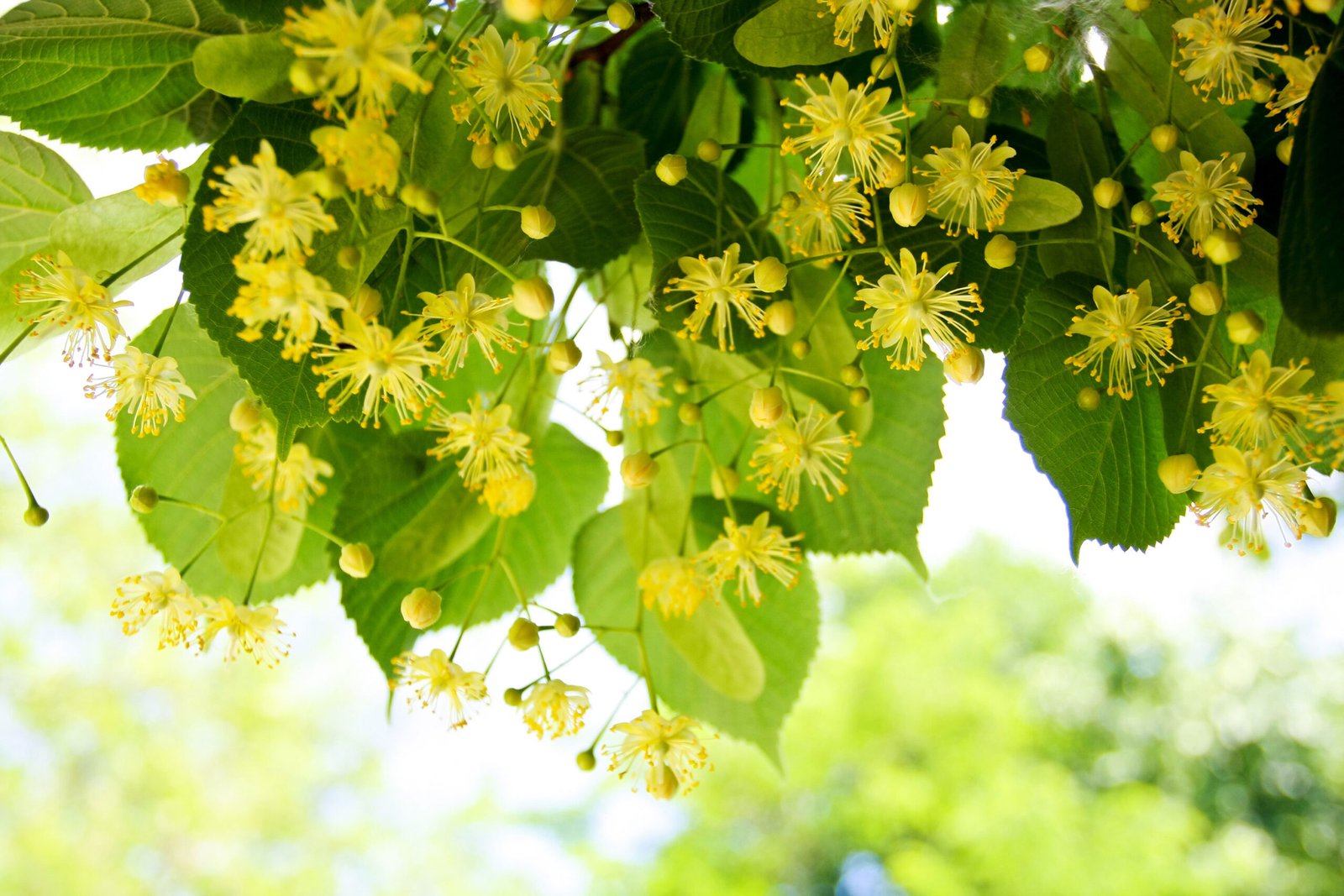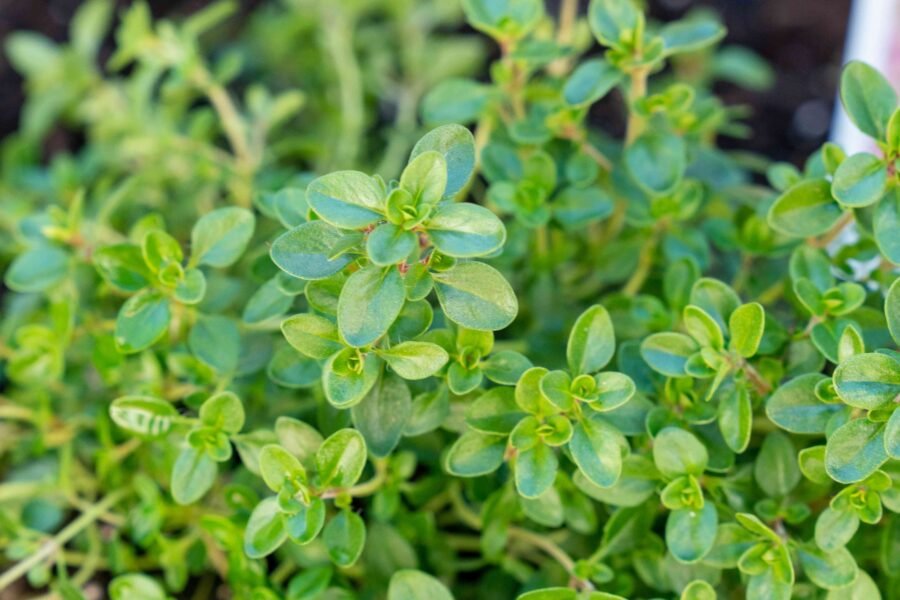PLANT NAME:
Latin: Tilia europea
Common: Lime flowers or linden flowers
FAMILY: Tiliaceae
HABITAT/GROWING: As a specimen tree or in avenues in parks or gardens, and wild in woods and thickets in sunny positions throughout the temperate world.
PARTS USED: Flowers
HARVESTING: Flowering aerial parts
Are you interested in a holistic approach to health and nutrition that incorporates herbalism? Read about my programs here.
TRADITIONAL USE:
Nicolas Culpeper, in his Complete Herbal, writes that lime is an excellent nervine effective for apoplexy, epilepsy, vertigo and heart palpitations (Culpeper, 1995).
Wood (2008) notes that due to its sedative effect, most German villages had an area with lime trees growing under which people would conduct business. Supposedly so they could remain calm while doing so! The flowers are also known as an old European remedy for children with hyperactivity or fever. In ancient times, linden flowers were used for convulsion and epilepsy: “They are universally recommended in epilepsies, and all nervous distempers, and upon that account make a part of the compound piony-water” (Quincy, 1736).
While I have not used this herb much personally, I did some across it on a herb foraging course and experienced its nerve calming effects when smelling the flowers. Furthermore, it is an ingredient in a nerve tonic herbal combination tincture that I sell.
MODERN USE:
Ideally used as an infusion for anxiety, panic attacks or hysteria. This is especially well indicated in diseases of the cardiovascular system aggravated by nervous excitation e.g. high blood pressure. In the past, it was thought to help clear the arteries; the idea was of small elf arrows coursing through the veins. With the discover of flavonoids which help to strengthen blood vessels and so ease flow, this traditional view has actually been vindicated! It is useful for baths for fractious children. Internally, it is a good fever remedy for children and others, helping to break the sweat by increasing the blood flow to the surface (peripheral vasodilator). Herbs which do this are called diaphoretic.
CONSTITUENTS:
Volatile oil, saponins, flavonoids, condensed tannins, mucilage (SM). Volatile (containing farnesol which gives the flowers their characteristic smell), flavonoid glycosides (including hesperidin and quercitrin), saponins, condensed tannins, mucilage, manganese salts. The bark contains coumarins (MM). Also amino acids, mucilaginous polysaccharides, sterols, and phenolic acids (Wood, 2008).
PHARMACOLOGY:
This herb has often been ignored as no modern basis could be found to explain its action, but see under modern uses.
PHARMACY:
1-4gms dried flowers in infusion 3-4 times per day.
OTHER AUTHOR USES:
Herbalist and homeopath, Matthew Wood notes that lime flowers are still used for hyperactivity or fever in children (Wood, 2008). Furthermore, that they are suitable for use with symptoms of “kidney heat and irritation, including increased blood volume, essential hypertension, orthostatic hypertension, moist, warm skin, congestion of the kidneys, scanty, dark urine and edema” (Wood, 2008). Wood further notes the specific indication of the tongue being red, perhaps flame shaped and somewhat moist.
The herbalist Dr Edward Shook (1974) lists lime flowers as a nervine, stimulant and tonic, noting that their use is effective as a remedy for nervous and catarrhal disorders after colds and also for restlessness, indigestion and hysteria. Shook suggests the use of lime flowers in a bath to assist in sleep. He also suggests the use of this herb in a combination remedy for high blood pressure, which makes sense with it being a calming herb and the links of high blood pressure to stress.
American druidic herbalist Ellen Hopman (2016), suggests additional usage of the inner bark, from which a tea can be prepared for lung conditions and heartburn. She further refers to the standard usage of a tea or tincture of the flowers as being effective for coughs, colds or even painful digestion.
In Ayurvedic terms, Anne McIntyre writes that lime flowers are an excellent cooling remedy for pitta conditions, in a similar way to chamomile previously, especially with respect to pitta dosha in the mano (the mind), rasa (blood plasma/lymph, the first tissue formed) and raktavahasrotas (circulatory system channels, especially related to haemoglobin) (McIntyre, 2012). The flowers are thought to work well in relieving nervous heart palpitations and high blood pressure, to calm irritability and impatience, to life the spirits and induce a relaxing sleep. Furthermore, the lime flowers are able to cool heat and inflammation, relieve fevers, arthritis and gout, calm inflammatory skin conditions and clear catarrhal congestion. In this way, they can also be helpful in reducing excess kapha dosha with respect to catarrhal accumulation after a cold. McIntyre explains that the lime flowers work primarily on the lymphatic, circulatory, digestive, nervous and mind channels of Ayurveda, which does match up with other cited uses. She also suggests that a lotion could be made from the lime flowers which could be used to treat inflammatory skin problems, boils and abscesses, haemorrhoids, urticaria, shingles, scalds, burns and sore, inflamed eyes.
My initial impression upon tasting this herb was a slight tone of sweetness, followed by astringency and a stimulation of the stomach and digestive tract. There was also a calming sensation, with energy being drawn down from my head into the middle part of my body. Based on my energetic perception of the tasting experience, I would imagine that this herb would be beneficial for aiding the digestive process due to bringing energy to that area as well as calming the nervous system, which is important for the process of digestion to occur. It appears to have a calming and cooling effect. This was written before knowing what the herb was.
Reviewing the literature, there seems to be a consensus with lime flowers regarded as effective in calming nervous tension, irritability and hyperactivity, calming and cooling the body and thereby also indirectly assisting physical conditions that are caused at least partly by those states, like digestive issues, hypertension and other stress-related conditions. Wood’s specific tongue indication is a description of a typical pitta person, being red, pointed and slightly moist – this is in agreement therefore with the Ayurveda-trained herbalist Anne McIntyre who noted that lime flowers are a good remedy for cooling down excess pitta.
My initial impressions of the herb were fairly in line with the published authors, as I identified the calming and cooling nature of the herb, although my personal experience had a perhaps unusually significant emphasis on the digestive system. This could be explained by my state of being at the moment of taking the tea, perhaps struggling to digest some food due to stress, which having been calmed by the lime flower tea, then allowed my body to concentrate more of its resources in digestion. There was a similarity in the experience of tasting the tea to chamomile, so I am glad to now read of their similar functions at least with respect to the nervous system calming and pitta dosha balancing.
Are you interested in a holistic approach to health and nutrition that incorporates naturopathy? Read about my programs here.
ENERGETICS: Taste, Character, Colour
Tastes: My own experience of the taste is one of sweetness, slight pungency and astringency. Contributions from other herbalists include the following: sweet, also moist and cool (Wood, 2008), sweet and pungent (McIntyre, 2012).
McIntyre notes that the post-digestive taste, important in Ayurveda, is sweet and that the herb itself has a cooling effect with the qualities of lightness and dryness.
Character: I envisage the character of lime flowers to be that of a comforting and calming sweet sea breeze, cooling one down on a hot summer’s day but also providing the comforting scent of the ocean.
Colour: a pale blue, reflecting its calming and cooling feeling that I had when drinking it.
References
Culpeper, N. (1995) Culpeper’s Complete Herbal Wordsworth Reference
Hopman, Ellen Evert (2016) Secret Medicines from Your Garden: Plants for Healing, Spirituality & Magic Healing Arts Press
McIntyre, A. (2012) Dispensing with Tradition: A Practitioner’s Guide to using Indian and Western Herbs the Ayurvedic Way Self-Published
Quincy, J. (1736) A Complete English Dispensatory, In Four Parts Thomas Longman.
Shook, E (1974) Elementary Course in Herbology Trinity Centre Press
Wood, M. (2008) The Earthwise Herbal, Volume I: A Complete Guide to Old World Medicinal Plants North Atlantic Books



